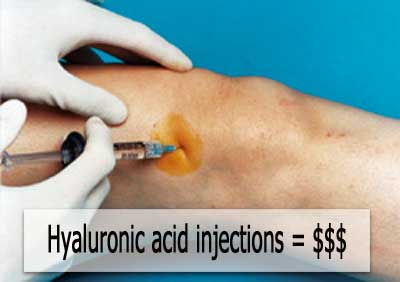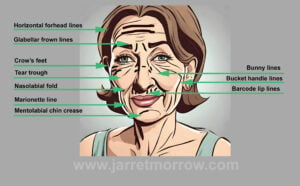For those who suffer from knee osteoarthritis, one potential treatment option would include having your doctor inject your affected joint with hyaluronic acid. Yes, hyaluronic acid is used for more than just dermal fillers. Research suggests that it can be moderately effective for a brief period of time.
Hyaluronic Acid (HA) has become a buzzword in the beauty and medical industries, known for its incredible ability to hydrate and rejuvenate the skin. But what exactly is it, and how is it used in medical injectables? Let’s break it down into simpler terms.
What is Hyaluronic Acid?
Hyaluronic Acid is a naturally occurring substance in our bodies, found in the highest concentrations in fluids in the eyes and joints. It’s known for its astonishing capacity to retain moisture – one gram of HA can hold up to six liters of water! This property makes it invaluable in keeping our skin hydrated and voluminous.
Where Does Injectable Hyaluronic Acid Come From?
Initially, HA used in medical and cosmetic procedures was derived from rooster combs or made by bacteria in a lab. Nowadays, most HA for injectables is synthetically produced through a process called biofermentation. This process involves growing bacteria in a controlled environment, which then produce HA as a byproduct. This method is preferred as it’s more sustainable and reduces the risk of allergic reactions.
How is Hyaluronic Acid Made into an Injectable Form?
The HA produced through biofermentation is in a liquid form, which isn’t very useful for injectables. To turn it into a gel-like substance that can be injected, it undergoes a process called cross-linking. Here, the HA chains are bound together, making the substance more stable and longer-lasting when injected into the skin.
Uses of Injectable Hyaluronic Acid
Injectable HA is primarily used for cosmetic purposes. It’s a popular ingredient in dermal fillers, where it’s used to reduce the appearance of fine lines and wrinkles, enhance lips, contour the face, and add volume to sunken areas. Its hydrating properties help to plump up the skin, giving it a more youthful look.
HA injections are also used in orthopedics, particularly for patients with knee osteoarthritis. The HA acts as a lubricant and cushion in the joint, helping to reduce pain and improve function.
Safety and Efficacy
Injectable HA is generally considered safe, especially since it’s a substance naturally found in the body. However, as with any medical procedure, there are potential risks, such as allergic reactions or infections. It’s essential to have these injections performed by a qualified healthcare professional.
In conclusion, injectable Hyaluronic Acid is a marvel of modern science – a way to harness a naturally occurring molecule for incredible health and beauty benefits. Whether it’s smoothing out wrinkles or easing joint pain, HA injectables represent a fusion of nature and technology, offering solutions that were once a dream in the realms of skincare and medical treatments.

From a recent study published in the Journal of Family Practice (Modawal et al, 2005), the study authors concluded the following:
“Intra-articular viscosupplementation was moderately effective in relieving knee pain in patients with osteoarthritis at 5 to 7 and 8 to 10 weeks after the last injection but not at 15 to 22 weeks (Modawal et al, 2005).”
In short, the study authors found that intra-articular injections of hyaluronic acid were moderately effective at providing pain relief for patients with knee osteoarthritis. From this data, it appears that these injections provided some pain relief for up to 10 weeks+, but less than 15 weeks.
This study additionally included these practice recommendations:
- Consider injections of hyaluronic acid injections only after conservative therapy has been tried for at least three months or the patient is unable to tolerate NSAIDs.
- Stress to patients that pain relief may not be fully experienced until 5-7 weeks following the last injection.
What does this mean?
Hyaluronic acid injections should be tried after other treatment options have been explored. In addition, hyaluronic acid injections may offer moderate pain relief, but the pain relief can take up to a month to reach the maximum effect.
How much do Hyaluronic acid injections cost?
Important! Each injection costs approximately $230 and the recommendations include patients receiving one injection per week for a total of five weeks which amounts to about $1150.
Source:
- Modawal A, Ferrer M, Choi HK, Castle JA. Hyaluronic acid injections relieve knee pain. J Fam Pract. 2005 Sep;54(9):758-67.






